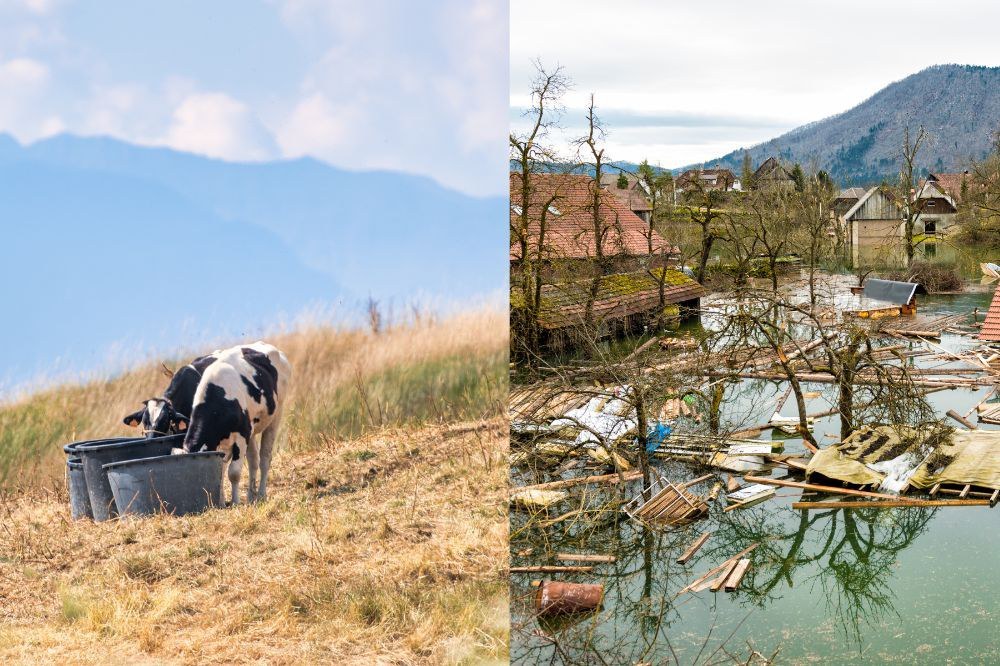Climate risks: better to prepare than to wait
Early warning systems for heavy rainfall, prediction models for droughts: the MultiBios project, completed in April 2025, saw biosphere parks from German-speaking countries sharing their experiences in dealing with climate risks. A research team investigated their role in natural hazard management.
From centuries-old cultivated landscapes, such as Alpine pastures, to strictly protected core zones where nature can develop uninfluenced by human activity, biosphere parks are considered model regions for the coexistence of humans and nature. However, they have so far played a passive role in dealing with natural hazards and climate risks. They impart knowledge, participate in research projects and connect stakeholders. In the MultiBios project, researchers from the University of Natural Resources and Life Sciences in Vienna questioned land users in the Vienna Woods, the Lungau region of Salzburg and Val Müstair in Switzerland about climate risks. The risks these perceive on their own land include snow pressure, windthrow and bark beetles, as well as heavy rain, flooding and mudslides. Vegetation periods are becoming longer owing to climate change, while agriculture is becoming more intensive in valleys and more extensive on slopes. At the end of March 2025, the MultiBios project team presented findings such as these as well as regional examples of how to deal with natural hazards in a publicly accessible webinar.
Early warning systems and climate adaptation
Exchanges of experiences and transfers of knowledge between the participating biosphere parks, accompanied by a transdisciplinary group, were central to the project. The Black Forest/D Biosphere Reserve, for example, reported on a prediction model for water supply to common pastures during droughts and dry periods. The Biosfera Engiadina Val Müstair/CH reported on an early warning system with automatic road closures in the event of impending mudslides. In the Murtal/A Biosphere Park, an Austrian-Slovenian commission manages flood control and has developed a cross-border management plan. The project highlighted the development potential for biosphere parks. In particular, these include climate change adaptation and nature-based approaches such as windbreaks, soil-conserving, organic and diversified agriculture – for example to protect moors. Overall, the researchers call for stronger networking and a supporting role for biosphere parks in revitalisation projects and in the development of strategies for natural hazard management.
Further information on the project and the webinar, see:
www.cipra.org/multibios
The webinar took place as part of the MultiBios project. It was organised by the International Institute for Applied Systems Analysis (IIASA) in Laxenburg, the Institute for Social Ecology at the University of Natural Resources and Life Sciences, Vienna, and CIPRA International. The following UNESCO biosphere reserves were involved in the project: Vienna Woods Biosphere Reserve/A, Salzburg Lungau & Carinthian Nock Mountains Biosphere Reserve/A, Murtal/A, Großes Walsertal Biosphere Reserve/A, UNESCO Biosfera Engiadina Val Müstair/CH, Black Forest Biosphere Reserve/D. The two-year research project was funded by the Austrian Academy of Sciences as part of UNESCO's “Man and Biosphere” (MAB) programme. SCNAT in Switzerland and the MAB National Committee in Germany also provided financial support for the project.




